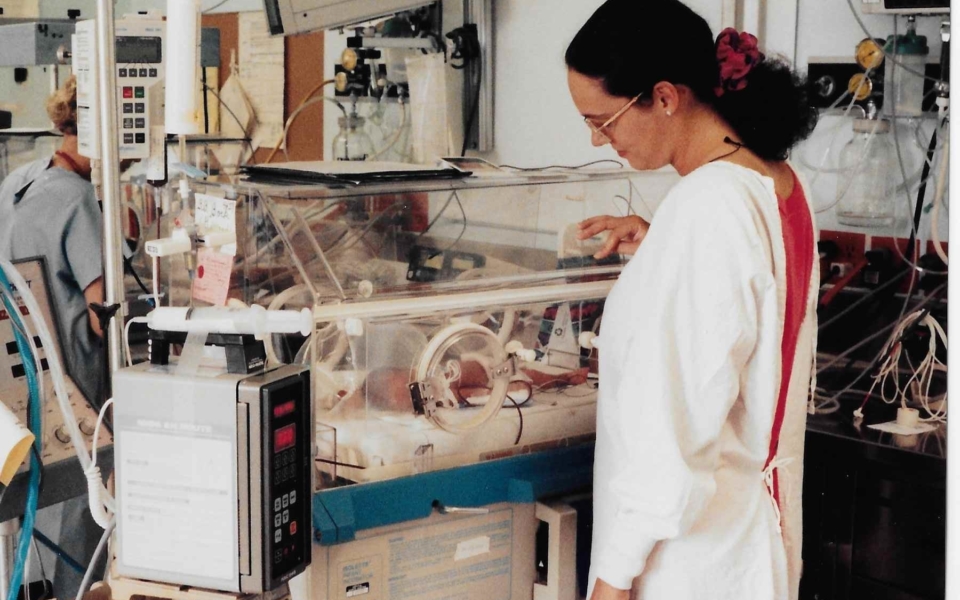Camille’s adventure began in 1992 while her parents were honeymooning in the Dominican Republic. Her mother’s water broke in the middle of the trip. Her father took her to a nearby clinic, where a doctor examined her and delivered the shocking news that a fetal heartbeat couldn’t be detected.
But then Camille decided to give her mother a couple of kicks, almost as if to reassure her. Her parents immediately flew back to Montreal and rushed to Sainte-Justine. They already felt a little better knowing they were in one of the best neonatal care facilities in North America.
Five hours later, Camille was born via natural delivery. Her parents only caught a fleeting glimpse of her before she was whisked away to the neonatal intensive care unit where she was resuscitated and intubated. Thus began the battle for her life.




Camille spent her first seven weeks in the NICU. Plenty of complications would follow – enough to keep her parents on pins and needles. But after three months of attentive care at Sainte-Justine, she went home with her family.
Back to Sainte-Justine
Fast forward to 2015, more than 20 years later. Camille was thriving. She showed no lasting effects of premature birth. She was living in Quebec City, where she was enrolled in a master’s degree in pharmaceutical science, specializing in pharmacogenomics. She agreed to take part in the Sainte-Justine Research Centre’s HAPI Project, led by Dr. Anne Monique Nuyt, on the health of adults born extremely preterm.
When I went back to Sainte-Justine for the study, I realized I could focus my research on preterm babies. It had never crossed my mind before that.
After an enthusiastic telephone conversation with Dr. Nuyt, Camille joined the neonatal research laboratory in 2016, while she worked on her PhD in biomedical science at the Université de Montréal. Her research looked into the long-term cardiovascular consequences for adults born extremely preterm: in other words, people like herself!




When I started out, my coworkers in the lab were concerned that I’d be stressed or worried about the results. It’s turned out to be quite the opposite. Since I myself was an extreme preemie, it’s given me a new way of looking at how we interact with participants, since I can understand the process from both sides.
Since returning to Sainte-Justine, Camille has also been involved in a variety of projects related to the Centre of Excellence in Neonatology, such as the Wall of Hope, to support families who are going through the same experience as her parents. She has also made it a point to help build a sense of community among her fellow adult preemies – something that often goes overlooked. Her goal in all of this is to pay it forward and make a real difference in society. A goal shared by the Foundation and its donors, who support Dr. Nuyt’s research in neonatology.
Being born prematurely has obviously had an impact on my life. After I finish my PhD, I would like to study medicine or public health. One thing is for sure: it’s part of who I am and will always be a topic that is very important to me.









